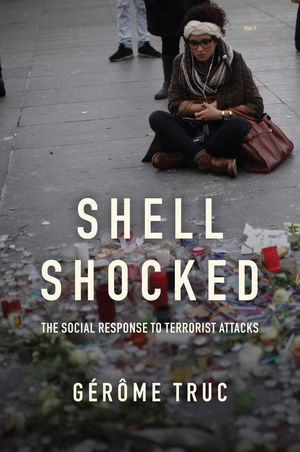
Media
Understanding the Framing of Acts of Violence
In the aftermath of terror, how we talk about the event shapes our response.
Posted June 14, 2018
After 9/11, the United States was at war, according to the media, the George W. Bush administration, and the majority of Americans. Coming just weeks after the United States observed the 60th anniversary of Pearl Harbor, many were quick to make the connection between the two attacks. As George W. Bush wrote in his private diary that very evening, “The Pearl Harbor of the twenty-first century took place today.” The framing of 9/11 as an act of war was not just emotional; the wars in Afghanistan and Iraq both used the attack as justification for military intervention.

Other countries have experienced terrorist attacks in the 17 years since, but the responses have been noticeably different, as Gérôme Truc demonstrates in Shell Shocked: The Social Response to Terrorist Attacks. Truc considers the 3/11/04 attack in Madrid, the 7/7/05 attack in London, and the 11/13/15 attack in the offices of Charlie Hebdo in Paris alongside the events of 9/11 to examine how the way in which we frame terror attacks shapes our response to them. Truc carefully points out many of the differences in media coverage; most notably, few images of human suffering were captured on 9/11, and the reticence of the American media to print such images created a pictorial catalogue of the aftermath as a post-apocalyptic landscape. Conversely, images of the dead were used (albeit sparingly) in the European cities mentioned above, which Truc argues helps establish a visual record of violence similar to the great anti-war photographers of the Vietnam era.
Truc also claims that the immediate framing of 9/11 as a new Pearl Harbor effectively obfuscated the American foreign policy decisions that arguably gave rise to Al-Qaeda and Osama bin Laden. We see the same dynamic at work in more recent stories about the so-called Islamic State; few American publications explicitly establish the link between the United States’ intervention in Iraq and the rise of ISIS.
Frames matter. They shape how we mourn and influence the actions we take in the wake of tragedy. If we have been attacked as an act of war, military retaliation seems a natural response, but such a leap cuts off all other choices and hinders the real work of mourning we have to do as a country. In these increasingly divided times, partisans from both sides of the aisle have called for a return to the national harmony of 9/12, but few are willing to seriously reckon with the bellicose rhetoric immediately following, which made such unity all but impossible.
Reading through Truc’s book, I couldn’t help but think about the sort of attacks that seem to be on most people’s minds these days: school shootings. In the aftermath of a school shooting, the general public wants to know everything who the person who perpetrated such a deed: were they troubled? Did the have a mental illness? Were they picked on? Then, predictably, some begin calling for gun control while others claim that it is not the time for such a discussion or that that is not really the issue at hand.
Our almost insatiable need to try to unlock the motives of the perpetrator often obscures the real work of mourning which we have to do. While it has been slow to gain steam, some mental health professionals as well as survivors of school shootings have asked the media to refrain from extensive portraits of the perpetrator, rightly fearing that such profiles could lead to copycat shootings. The current framing of school shootings, regardless of the ideological bent of the news organization, continues to perpetuate the idea that such shootings are the actions of a lone, troubled individual. In some sense that is true, of course, but every other country in the world has lonely, troubled individuals, but only the United States has children being murdered in their schools.
We can and should resist the voices that always claim it is too early to speak about gun violence in the wake of a school shooting, for the very real work of framing begins unnoticed in the immediate aftermath of tragedy. The framing of 9/11 as an act of war led to prolonged military interventions in Afghanistan and Iraq which costs countless soldiers their lives, not to mention the millions of dead Afghani and Iraqi civilians. It also prevented the United States from considering the ways in which our foreign policy decisions shape the international landscape. We are at a similar crossroads with gun violence. May we not just focus on the tragedy at hand and only blame individual autonomy but also take a good hard look at the ways in which our tragically lax gun laws enable easy access to weapons of war. Our children deserve that much.
References
Truc, G. (2017). Shell Shocked: The Social Response to Terrorist Attacks. Medford, MA: Polity Press.

